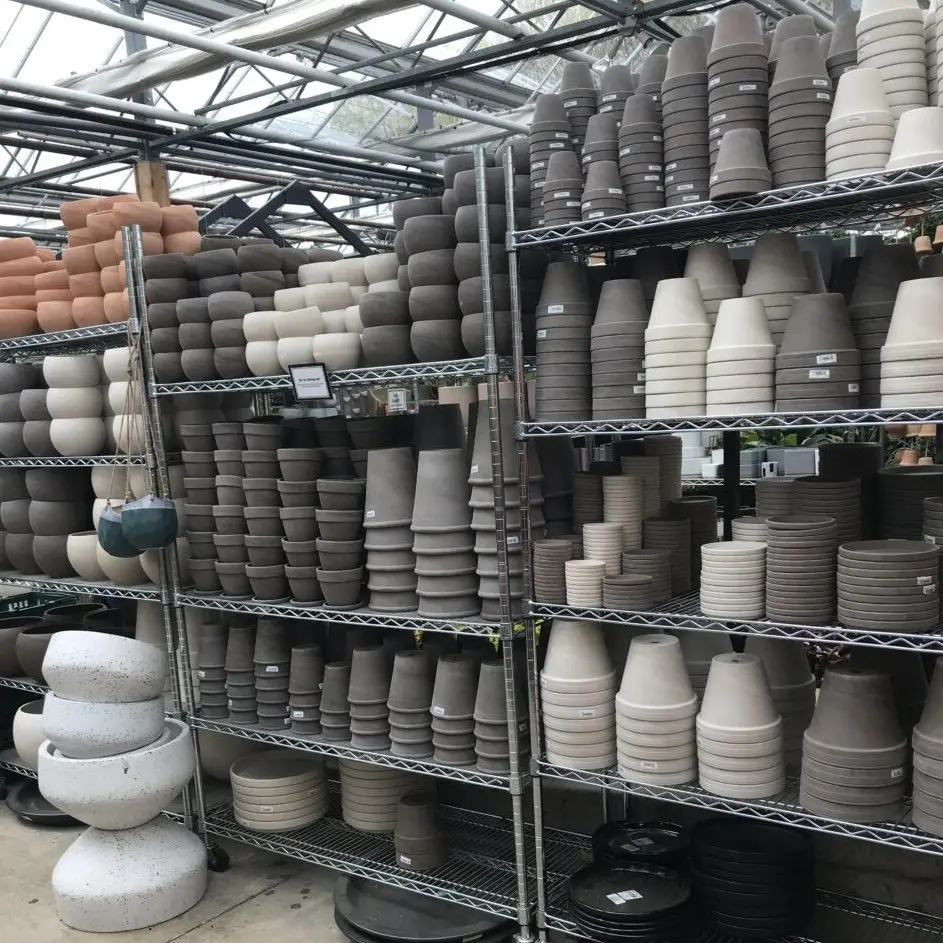The four major types of containers used to grow Begonia are clay, plastic, and wooden pots, and also wire baskets. Each has its merits.
Clay Pots
Unglazed clay pots allow the roots to breathe, because they are porous and allow air and water transfer. (Glazed pots behave more similarly to plastic.) Many types of begonias grow well in clay pots, such as rhizomatous begonias which do not thrive in wet potting mix. The mix in clay pots dries out faster, so clay will especially help growers who are chronic over-waterers. Nearly all begonias can be grown well in clay pots. Clay pots come in sizes and shapes for nearly every purpose. Make sure to only use pots with drainage holes. A drawback to clay pots is that they are heavy and are more expensive, but they look nice and last a long time.
Plastic and Glazed Pots
Plastic pots are the most commonly used pots. They are lightweight, relatively inexpensive, long-lasting and work well for nearly all Begonias. Watering and sizing correctly are the main problems with plastic pots. Unlike the other three pot types which are porous, plastic pots are not and hold water much longer. This usually is not a problem, and growers can find the correct size pot and potting mix to grow their plants well. Again, only use pots with drainage holes. Plastic pots can be found in any size and shape needed. Glazed pots are similar to plastic in how they work. White and light colored pots should be avoided, because they deteriorate quickly in sunlight so aren’t very long lasting. And they are frowned upon at Begonia shows.
Baskets
Moss baskets are commonly used for their aesthetic value, and also because some begonias grow extremely well in them. They consist of a wire frame wrapped and lined with long fibered sphagnum moss. If you decide to make one, use good quality sphagnum moss. After lining, they are filled with mix and the Begonia is planted as usual. These are usually used as hanging baskets.
The moss allows for perfect air and water exchange and is nearly foolproof to grow in. They are a bit of work to make and would not be practical for large collections, but are nice for larger specimen baskets, because they are lighter than any other pot would be of that size. Rhizomatous begonias can even make wonderful hanging baskets using this type of pot. They can be trained to grow completely around the pot to make a Begonia ball. Also, even with the other types of begonias, they can be planted through the bottom of the pot also to make a ball.
There are various liners for the moss basket wire frames. Some are coconut fiber mats that are cut to fit the pot. These should be treated just like the moss covered baskets. There are other liners, which are plastic. Wire baskets lined with plastic liners should be treated as plastic pots.
You can make your own wall pocket type moss pots for growing begonias on walls for semi-epiphytically. Attach chicken wire over a section of wood, line with sphagnum moss, and fill with a small amount of mix. Begonias, especially rhizomatous and trailing, will quickly cover the board. This method works well with all begonias considered epiphytic.
Extracted From: Original Article By Brad Thompson, Potting, Potting Mixes & Repotting.


